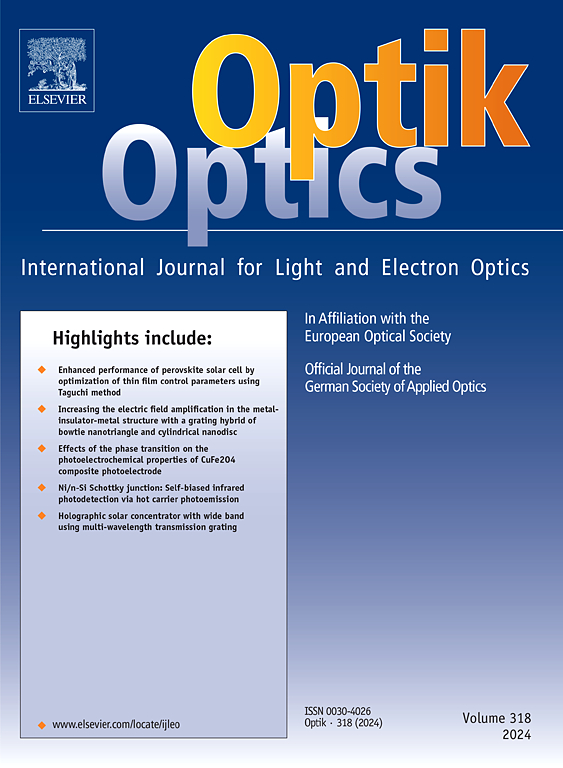Design of a high-efficiency PV array of 3rd generation perovskite solar cells using a ZnO/TiO₂ ETL and Au in the back electrode
IF 3.1
3区 物理与天体物理
Q2 Engineering
引用次数: 0
Abstract
This paper examines the performance enhancement of third-generation perovskite solar cells (PSCs) utilizing a novel pyramidal electron transfer layer (ETL). Utilizing the high electron-transporting capabilities of zinc oxide (ZnO), a 3D-COMSOL Multiphysics model was created to analyze the optical and electrical properties of the device. This study examines replacing the traditional titanium dioxide (TiO2) ETL with ZnO and swapping the silver back contact for gold (Au). A major focus is on the geometric optimization of the pyramidal ETL structure. Through various simulations, we discovered that optimal performance occurs with a pyramid height of 0.7 of the total ETL thickness. This configuration yields a notable power conversion efficiency (PCE) and other key performance metrics, demonstrating the effectiveness of the proposed design. Additionally, the study examines the impact of temperature and solar irradiance fluctuations on device performance. The novelty of this research lies in using a pyramid height of 0.7 and comparing our results from a single cell modeled in COMSOL with those from a single cell in MATLAB-SIMULINK, and then with a cell array. Our findings show that for the 0.7 pyramid, the JSC is 34.9 mA/cm², while in the PV array, the JSC reaches 9.3 A/cm².
采用ZnO/TiO 2 ETL和Au作为背电极的第三代钙钛矿太阳能电池高效光伏阵列的设计
本文研究了利用新型锥体电子传递层(ETL)增强第三代钙钛矿太阳能电池(PSCs)的性能。利用氧化锌(ZnO)的高电子传输能力,建立了3D-COMSOL多物理场模型来分析该器件的光学和电学特性。本研究探讨了用ZnO取代传统的二氧化钛(TiO2) ETL,并将银背触点换成金(Au)。一个主要的焦点是金字塔ETL结构的几何优化。通过各种模拟,我们发现当金字塔高度为ETL总厚度的0.7时,性能最佳。这种配置产生了显著的功率转换效率(PCE)和其他关键性能指标,证明了所建议设计的有效性。此外,该研究还考察了温度和太阳辐照度波动对设备性能的影响。本研究的新颖之处在于使用金字塔高度为0.7,并将COMSOL中单个细胞模型的结果与MATLAB-SIMULINK中的单个细胞模型的结果进行比较,然后与细胞阵列进行比较。我们的研究结果表明,对于0.7金字塔,JSC为34.9 mA/cm²,而在光伏阵列中,JSC为9.3 A/cm²。
本文章由计算机程序翻译,如有差异,请以英文原文为准。
求助全文
约1分钟内获得全文
求助全文
来源期刊

Optik
物理-光学
CiteScore
6.90
自引率
12.90%
发文量
1471
审稿时长
46 days
期刊介绍:
Optik publishes articles on all subjects related to light and electron optics and offers a survey on the state of research and technical development within the following fields:
Optics:
-Optics design, geometrical and beam optics, wave optics-
Optical and micro-optical components, diffractive optics, devices and systems-
Photoelectric and optoelectronic devices-
Optical properties of materials, nonlinear optics, wave propagation and transmission in homogeneous and inhomogeneous materials-
Information optics, image formation and processing, holographic techniques, microscopes and spectrometer techniques, and image analysis-
Optical testing and measuring techniques-
Optical communication and computing-
Physiological optics-
As well as other related topics.
 求助内容:
求助内容: 应助结果提醒方式:
应助结果提醒方式:


